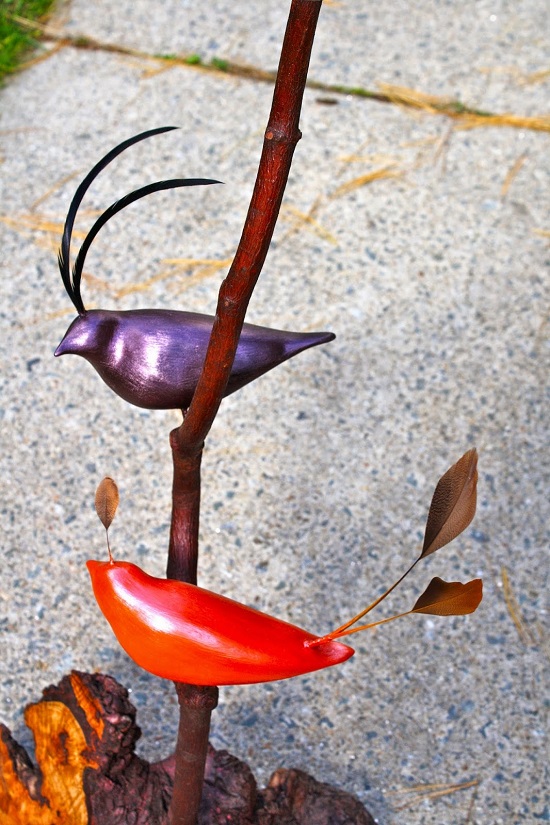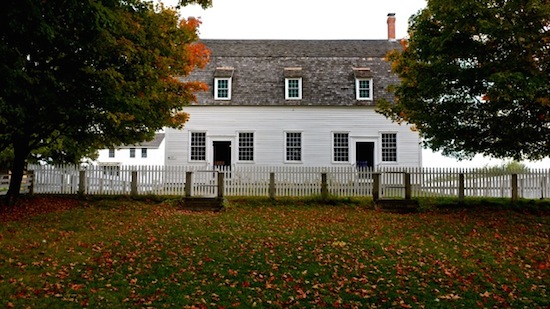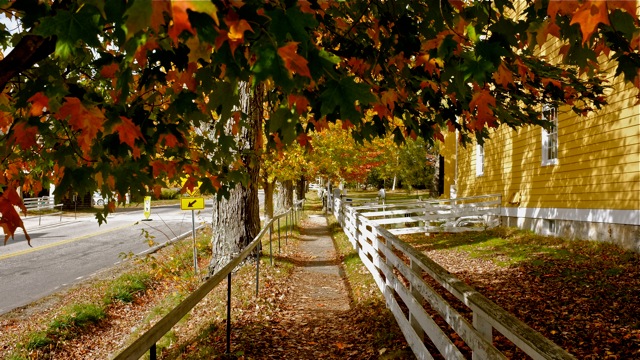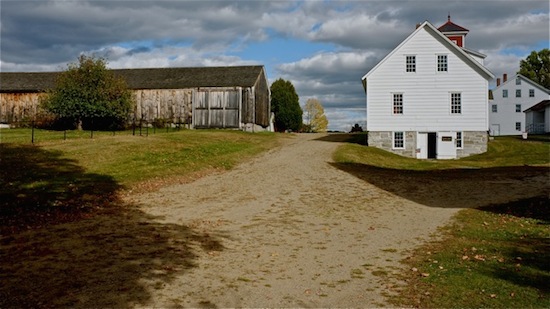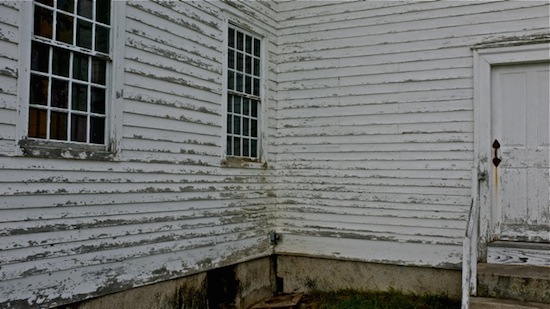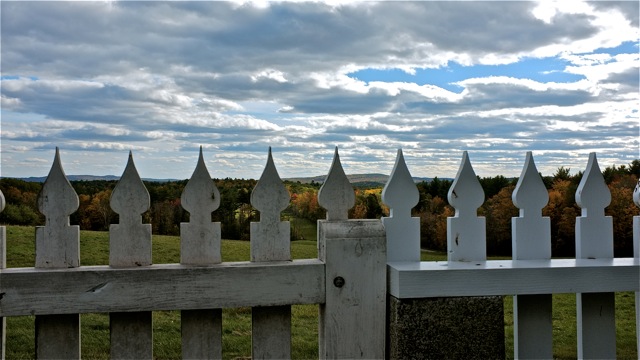
Salinger's high country
Statues at the wonderful Saint Gaudens National Historic Site, in Cornish, N.H., where J.D. Salinger lived for decades, though he remained in many ways a Manhattanite.
Herewith a charming look in The Boston Globe at J.D Salinger's Connecticut River Valley section of Vermont and New Hampshire. I have always found it one of the loveliest and most interesting parts of America.
I took a class in Chinese history with his wife of the time -- the '60s --- Claire Douglas, at Dartmouth. The young assistant professor seemed very smitten with this beautiful lady. Toward the end of the trimester, I was surprised that at a social gathering (at the professor's apartment) for the class, which only had about a dozen people, that the majority of the attendees (including the professor) supplemented their wine and beer with marijuana cigarettes. This was the high '60's indeed!
-- Robert Whitcomb
New Hampshire's lovely, strange, sad Canterbury tale
Commentary and photos by WILLIAM MORGAN
One of the treats of living in New England is spending a glorious October afternoon in New Hampshire. And of all the delightful, picture post-card perfect towns, one of the least unspoiled is the Shaker Village at Canterbury. (More photos below.)
There has been enough written about the Shakers. Yet a place like Canterbury can be very seductive: a utopian community where celibate people trying to be holy lived the simple life, farming and crafting timeless furniture.
Still, there is always a sense of unreality at most historic villages, such as Williamsburg or Plimoth Plantation. Canterbury has been saved from the worst excesses of that syndrome by not having a lot of money – the place is clearly struggling, buildings need paint and repair, while ghost tours, antique -car shows and the gift shop can only bring in so much revenue.
And, as with any Shaker community, no matter how well interpreted, there is still a dark side, a sadness. Besides the people fleeing the industrial life in the 19th Century, not to mention the creepiness of sect founder, Mother Ann Lee, one cannot escape the poor business model of an enterprise that relied solely on converts for growth.
In 1850, the Canterbury Shaker Village had 5,000 acres; today there are less than 700. But that land protects the community from whatever kind of trailer-park development would seek out a back-of-beyond rural area with no industry or promise of work. So, while ostensibly preserving the legacy of Shakers, Canterbury has maintained a real slice of what much of New Hampshire was like before World War II.
Our strange inter-species collaboration
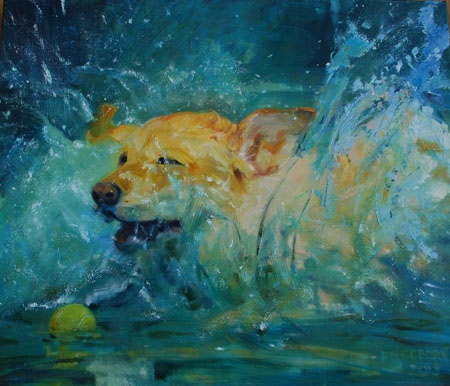 From the "Just for Grins'' series (oil, heavy gesso on canvas) of GAY FREEBORN at the Patricia Ladd Carega Gallery, in Center Sandwich, N.H.
From the "Just for Grins'' series (oil, heavy gesso on canvas) of GAY FREEBORN at the Patricia Ladd Carega Gallery, in Center Sandwich, N.H.
The relationship, and especially the deep bonds of affection between dogs -- those smelly, sometimes affectionate, sometimes vicious descendents of wolves -- and people, in all their complexity, never ceases to amaze me. We are both pack animals and it's astonishing how much the two packs have merged.
The "Grins'' series seems to celebrate people and their dogs in the summer, where even in New Hampshire it's possible to swim outdoors.
Something to look forward to
"Redbud Tree in Bottomload,'' photo by ELIOT PORTER, at the Portland Museum of Art (but photo is copyrighted by Amon Carter Museum of American Art, Forth Worth) in the Portland Museum's show "American Vision: Photographs from the Collection of Owen and Anna Wells''.
Please comment via rwhitcomb51@gmail.com
Jan. 7, 2014
Cold morning today but far from the "polar vortex'' catastrophe that it's being made out to be by the news media because their denizens think that nothing much else is going on. Of course, lots of stuff is going on but it bores those reporters and editors who haven't yet been laid off in the ferment caused by the triumph of mostly ''free'' information on the Internet. And maybe the public doesn't care all that much either.
Most importantly, "polar vortex'' sounds like a horror-movie monster. Very sexy. More vortexes to come because global warming is screwing up the jet stream? Too early to say with scientific assurance.
It's all rather typical of January, the coldest month. But February is often the snowiest because warm wet air begins to edge north again, setting up conflict with the cold air. Great for creating Nor'easters! Arctic air and the Gulf Stream can be in explosive proximity.
As I walked the dog this morning I enjoyed the crunch of my feet on the thin layer of snow that had fallen overnight as the front swung through from Canada, bringing a snow squall or two. And the frozen trees were creaking. Too cold to be slippery! The problem in the coastal Northeast is the wind. It can make urban walking miserable. When I lived in the Upper Connecticut River Valley, the temperature could be much colder than in Boston, Providence, New York and Philadelphia but the comfort level much higher because there was much less wind and it was very, very dry. Sort of exhilarating -- bright and almost antiseptically clean.
Meanwhile, along the lines of ever-more "nurturing'' of children by parents and schools (at the ones I attended we were often called by our last names and there wasn't much open concern for our feelings), is the practice of clothing our dogs for winter walks, even outside of the Upper East Side of Manhattan. I must confess that my wife and I have adopted this habit. The dog, a rescue mutt from San Antonio (via "Alamo Rescue''), fought having a coat on at the start but has since accepted it -- especially when it's windy.
My most physically painful memories of winter are in the streets of big cities with the northwest wind squeezing between the high buildings.
When it's really, really cold, ice is so sticky that you don't even worry about driving up and down steep snow-covered hills. A few times I had to drive my drunken mother to a drying-up spa at a place called Beech Hill Farm, on top of a mountain in Dublin, N.H. -- the little town where Yankee magazine was, and is, put out and where Mark Twain spent some happy times. If it was the winter, I'd pray for very cold weather. Around freezing was the most insidious, with a thin layer of melting in the sun, then quick refreezing toward evening.
The dramatic freeze-thaw cycles in New England make skiing more, well, exciting here than on the dusty, dry "powder snow'' promoted by resorts in the Rockies. Skiing in the White and Green mountains is much more of a challenge to muscles and nerves than is skiing at, say, Taos.
Anyway, I long for late February, when sun-facing cars and rooms suddenly seem to start to warm up much faster as the sun gets stronger. Even on a very cold day last week, I found the stone on a southwest-facing wall remarkably warm. We really do need to do a lot more with passive solar heating.
Diner rises after Irene
A typical small New England town diner goes on as Wilmington, Vt.'s informal community center after being repaired after devastating flooding by Tropical Storm Irene. Those high carbohydrate and animal-fat breakfasts may not make your body thrive, but your soul and social life get much sustenance.
These diners can be very friendly places but the staff and customers know when to leave people alone, too. Take the Windsor Diner, in Windsor, Vt. The great celebrity recluse J.D. Salinger, who lived just across the river in Cornish, N.H., frequently patronized the place; everyone left him alone.

